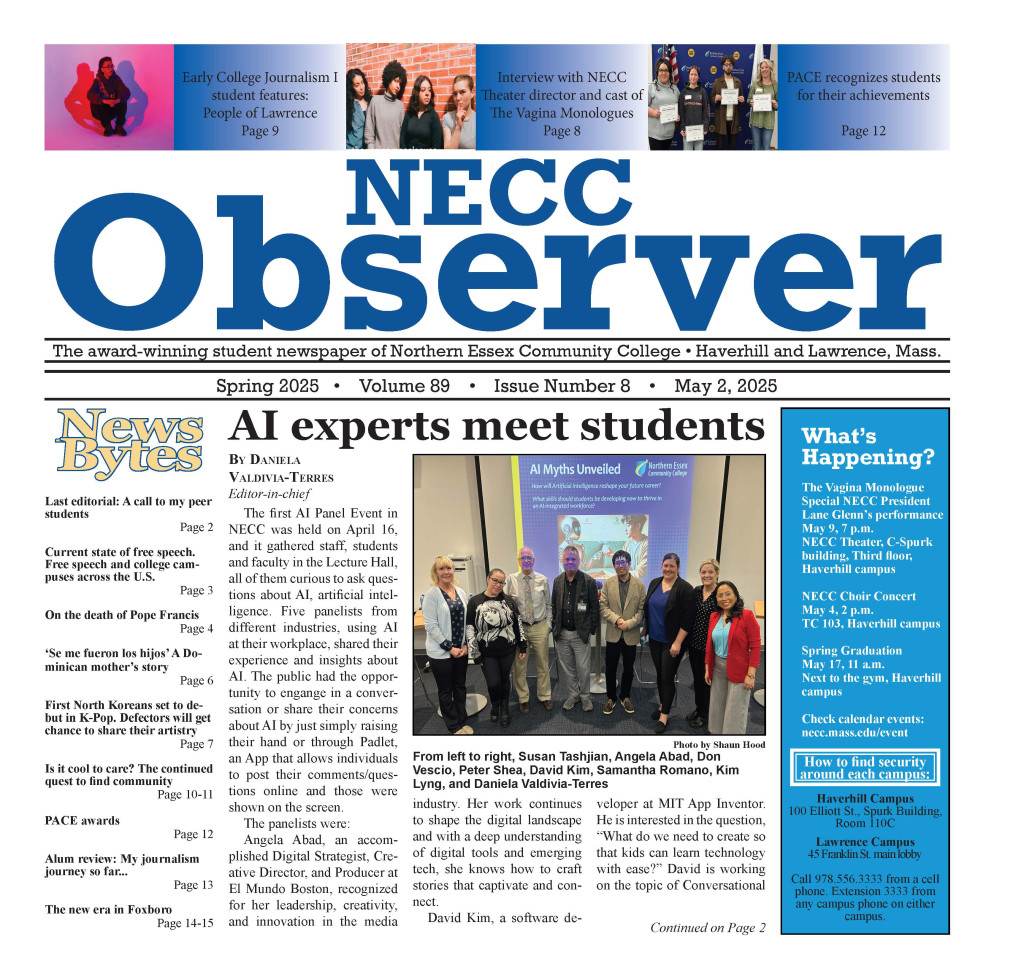The manner in which education has changed throughout the course of the Covid-19 pandemic has had a profound effect on the learning experience and the manner in which students go about receiving information from teachers and administration, and the method by which this information is relayed to them.
Without much, if any, physical presence on campus, both administration and students have had to adapt and find alternative methods to the traditional methods on information distribution.
Because of this, social media has become an increasingly important method through which the school itself can communicate and pass on information to students and the wider community.
Although Northern Essex Community College had an obvious online presence long before the pandemic, the approach the college took had to change as social media and the school’s website itself became far more important.
Both administrators and students can attest tothe changes that had to be made in order to cope with the conditions the situation necessitated,and the role digital communication played in ensuring information was passed along efficiently.
“‘I really wasn’t able to adjust because I wasn’t used to having class online at all, asking questions and communicating was way hard than I expected it to be,” said Lidiya Ryan.
Ryan had already enrolled for her first semester at NECC but soon found it to be a far more difficult format change than expected. While she expected it to be a routine change for her, she soon realized how radically different the two formats are from each other and the difficulties posed by only being able to communicate with professors in a digital format. \
“I used to like to ask a lot of questions after the class ended, and since now I could only email my professors it really wasn’t possible to do that anymore,” she said. “I don’t understand things as well when they’re explained through email.”
This led to greater difficulties completing the semester and her decision to pause taking classes until in-person learning resumed. “…I know I’ll finish, but right now I don’tthink I’d be able to finish my degree taking classes online,” she said.
Educators have also found difficulties when it comes to the online learning experience and has had to alter their teaching methods in order to better cope with students’ needs and home situations.
Valerie Wood, a fourth-grade teacher in Haverhill found the transition from in-person instruction to online instruction to be deeply disruptive to the learning experience and something both she and her students had to overcome in order to make it through the year.
When asked how quickly she noticed a shift in the class atmosphere she said she could ‘notice the difference in her students immediately.
Absences became way more frequent and it was becoming harder to hol dtheir attention for any period of time, she said.
“I don’t blame them, they’re so many distractions at hom ethat don’t exist in a classroom,” she said. “I tried to keep lessons a little shorter than I normally would and utilized videos more than I had before.”
Although she was nervous about exposing students to social media she did create a class website with a forum feature so she could “give them an outlet to speak what’s on their mind, even if it’s in a pretty limited format.”
As time goes on and education returns to a normal format, both educators and students will be better able to judge and analyze the merits of online education and the downsides to its utilization.
While the pandemic necessitated the implementation of online education, it’s not the first time it’s been used and society will be better able to refine it and utilize it in a more impactful manner than it had been throughout the course of the pandemic.
While most are grateful for the return to normalcy, this change in education is important and will help experts analyze ways to improve education in the future

